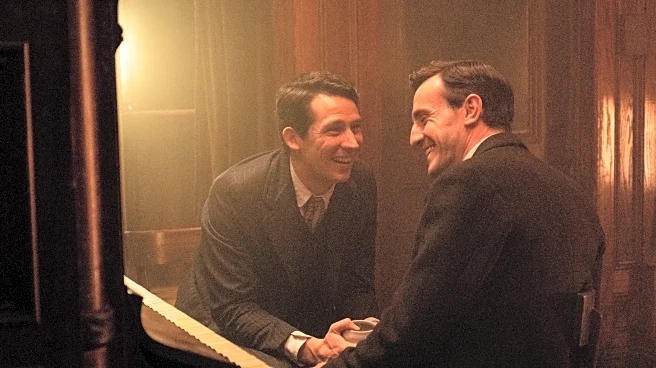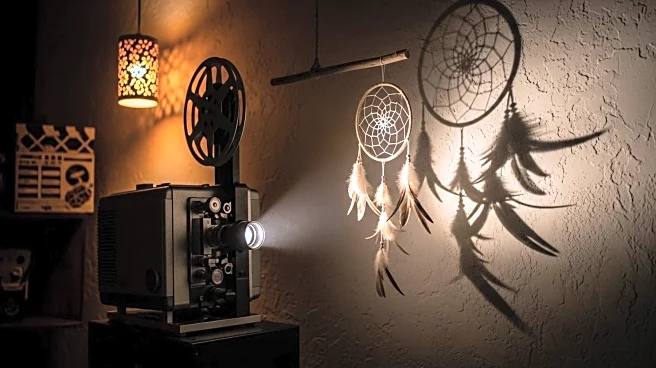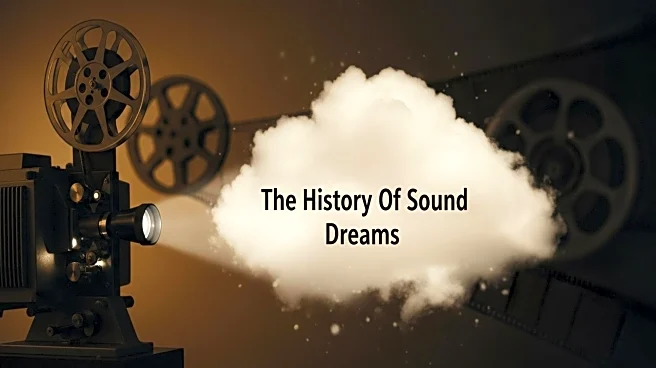What's Happening?
The film 'The History of Sound' is set during World War I and follows two young men, Lionel Worthing and David White, as they embark on a journey to collect authentic folk tunes in the backwoods of Maine. Lionel, portrayed by Paul Mescal, is a Kentucky farm boy with a unique gift for music, which leads him to Boston on a scholarship. There, he meets David, played by Josh O'Connor, and they bond over shared musical interests. Their relationship evolves into a romance, which is interrupted when David is drafted into the war. Upon his return, David invites Lionel to join him in recording local folk songs using wax cylinders, a novel concept for the locals. The film, based on a short story by Ben Shattuck, is noted for its restrained portrayal of the characters' emotions, allowing the music to convey the depth of their longing and heartbreak.
Why It's Important?
The film's exploration of gay longing and the use of music as a narrative device highlights the cultural and emotional significance of folk music in American history. It also sheds light on the challenges faced by LGBTQ individuals during the early 20th century, a time when societal norms were restrictive. By focusing on the characters' internal struggles and their connection through music, the film offers a poignant commentary on the power of art to transcend societal barriers. This narrative can resonate with contemporary audiences, fostering empathy and understanding for marginalized communities.
What's Next?
As 'The History of Sound' continues to gain attention, it may spark discussions on the representation of LGBTQ stories in mainstream media. The film's unique approach to storytelling through music could inspire filmmakers to explore similar themes, potentially leading to more diverse narratives in cinema. Additionally, the film's historical context might encourage viewers to delve deeper into the history of folk music and its role in American culture.
Beyond the Headlines
The film's depiction of ethnomusicology and the use of wax cylinders to record folk songs offers insight into the preservation of cultural heritage. This aspect of the story underscores the importance of documenting and preserving traditional music, which can serve as a valuable resource for understanding historical and cultural contexts. Furthermore, the film's setting in rural Maine and Kentucky highlights the regional diversity of American folk music, emphasizing the rich tapestry of sounds that contribute to the nation's musical identity.













